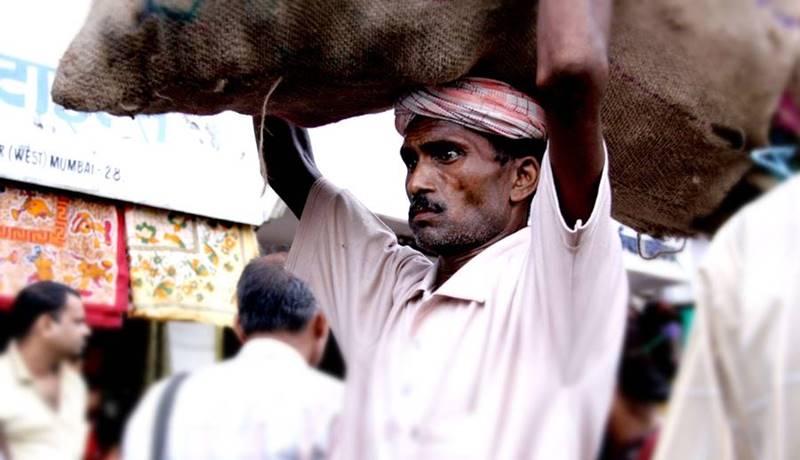Rising temperatures on a yearly basis hurts the economy by compromising manufacturing output in developing countries like India, states a new research.
The research titled ‘The Impact of Temperature on Productivity and Labor Supply: Evidence from Indian Manufacturing’, conducted by the Energy Policy Institute at the University of Chicago (EPIC) used micro data sets of worker output based on their productivity. It also studied the compiled data of more than 58,000 factories across India, and found that manufacturing plants generate about two per cent less revenue for every one-degree Celsius rise in annual temperature.
“This is reflected in lower Indian GDP output in hot years and possibly also lower year-on-year growth. Researchers estimated that the greatest declines occurred in labor-intensive plants,” the institute claimed.
“The damage is greatest when already warm days become hotter. If India wishes to succeed in becoming a manufacturing powerhouse using cheap labor, we need to think hard about how we can adapt to a hotter world.” Anant Sudarshan, the institute’s south Asia director, was quoted as saying in the report.
Sudarshan co-authored this research with E Somanathan of Indian Statistical Institute, Rohini Somanathan of Delhi School of Economics, and Meenu Tewari from University of North Carolina at Chapel Hill. The authors argue that although the focus of the paper is on Indian manufacturing plants nevertheless, because heat stress is a global reality, there are implications for any sector where labour is important such as construction and manufacturing.
Interestingly, this multi-year study indicates that climate control (using cooling facilities) in the workplace removes productivity declines but not absenteeism. This could be due to workers still remaining exposed to high temperatures at home and outside. “We see that in the absence of climate control, worker productivity declines on hot days, and we spot absenteeism even for workers in factories with cooling facilities,” Somanathan is quoted in the institute’s press statement.
The authors also warn that “warm countries in the developing world may face a pervasive ‘heat tax’ that could damage the competitiveness of their manufacturing sectors and further hurt the wages of poor workers.”
Also Read: Climate change hits Himachal’s famous apples, causes the of frequent floods
Rising heat and forced migration in Uttarakhand
Meanwhile, another recent study has stated that the hill districts of Uttarakhand are at a greater risk from rising temperatures which is expected to result in forced migration of the local people.
The study, conducted by Germany-based Potsdam Institute for Climate Research (PIK) and India’s The Energy and Resources Institute (TERI), focuses on how climate change impacts, such as rising temperatures, increasing glacial melt, and changing rainfall patterns, could affect livelihoods and thereby shape migration patterns in the hill state. It suggests the state’s annual average maximum temperature may increase by 1.6-1.9 degrees Celsius between 2021 and 2050.

Authors of the study note that the hill districts of Uttarkashi, Chamoli, Rudraprayag, and Pithoragarh are experiencing the greatest warming due to a phenomenon called ‘elevation-dependent warming’.
“This phenomenon, which is largely caused by snow albedo, cloud cover, atmospheric and surface water vapor changes, has amplified the rate of warming at higher elevations and made them more vulnerable to the impacts of climate change,” it states. Albedo (al-bee-doh) is a measure of how much light that hits a surface is reflected without being absorbed.
Also Read: Uttarakhand: The Himalayan state is besieged by extreme floods and increased droughts
Apart from the rising temperature, the study also suggests a change in the rainfall pattern of the state. It projects the state’s average annual rainfall to increase by about six per cent to eight per cent in the near-future (2021-2050). Southern districts such as Udham Singh Nagar, Nainital, Champawat and Pauri Garhwal have the highest projected increases in annual average rainfall, inform the authors.
“Climate change is functioning as a risk modifier influencing existing population movements in Uttarakhand. Seventy percent of the population is dependent on rain-fed agriculture that is not highly productive. Climate change has led to further decline in agricultural productivity over the last two decades, adding to outmigration pressures,” Himani Upadhyay, lead author of the study, is quoted in the press statement.
The study, titled ‘Locked Houses, Fallow Lands: Climate Change and Migration in Uttarakhand, India’, identifies three main areas of action for policymakers, namely — preparing for demographic changes resulting from migration; creating alternate livelihood options in the hill districts to revitalize the economy; and revisiting the state’s climate change action plan as well as the state’s agricultural policies in the wake of out-migration from hill districts.
According to Rural Development and Migration Commission, Uttarakhand, the inability to diversify livelihoods in rural areas is the most relevant push factor for out-migration (50 per cent) in Uttarakhand, followed by lack of educational institutions (15 per cent) and healthcare facilities (9 per cent). This dynamic has led to the abandonment of 734 villages since 2011, signifying the extent of depopulation in rural hill areas.
Also Read: Deserted hill villages in Uttarakhand come alive due to reverse migration


















